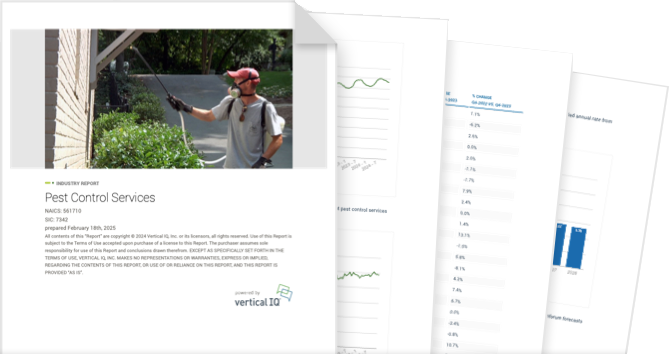Hair Care Services NAICS 812111, 812112

Unlock access to the full platform with more than 900 industry reports and local economic insights.
Get access to this Industry Profile including 18+ chapters and more than 50 pages of industry research.
Industry Summary
The 76,600 hair care service companies in the US, including beauty shops, hair salons, and barber shops, provide hair cutting, coloring, and styling services. Hair salons may also provide skin and nail care services. Barber shops may shave or trim men’s beards. Companies often sell hair care products. The vast majority of hair care service providers (95%) are beauty salons.
Competition For Ancillary Services
Beauty parlors compete with spas, nail salons, and physician’s offices for ancillary services related to skin and nail care.
Dependence On Skilled Labor
The reputation and success of an individual hair care establishment is highly dependent on the quality of service and staff.
Recent Developments
May 16, 2025 - Shift in Client Spending
- According to NBC News, salon workers are seeing a shift in client behavior in recent weeks, including canceling appointments, forgoing expensive treatments, and waiting longer between haircuts. According to Guy Lacey, a VP with salon equipment supplier Salon Services PRO, “Pre-bookings are down across most of our salon network, and the thing that’s really been happening in the last two to three weeks is cancellations. We’re starting to see a lot more cancellations.” Lacey compared it to the decline in 2007, at the beginning of the Great Recession. Salon data reviewed by Lacey shows clients who typically come in every six to eight weeks are stretching to 10 to 12 weeks, and hair extension appointments have fallen by a third. Stylists have seen supply costs rise for certain supplies, such as foil used to highlight hair and steel hair spray cans, due to the 20% tariffs on aluminum and steel.
- The US Bureau of Labor Statistics forecasts average job growth of 7% through 2033 for hairstylists and barbers and 8% for personal appearance workers such as nail artists and lash or brow techs, according to American Salon. Jobs in the beauty and grooming services industry are forecast to grow at a faster rate than the national average of 4% growth across all industries. The growth is driven by an “increased demand for personal appearance services” among consumers, per the agency’s Occupational Outlook Handbook. Demand is also fueled by viral trends in beauty and grooming, new technologies, and higher demand for personalized services, according to the 2025 Vagaro Vantage report.
- Consumers may adjust their beauty spending as consumer sentiment, an indicator of discretionary spending, continues to fall in large part due to tariff uncertainty and an expectation of higher prices, according to two major indicators. The final index of consumer sentiment from the University of Michigan dropped 8% in April 2025 from the previous month, according to CFO Dive. An index measuring consumers’ expectations for the future fell nearly a third since January, the steepest three-month percentage decline since the 1990 recession. According to survey director Joanne Hsu, “Consumers perceived risks to multiple aspects of the economy, in large part due to ongoing uncertainty around trade policy and the potential for a resurgence of inflation looming ahead.” The Consumer Confidence Index declined by 7.9 points in April 2024, compared to the previous month. Consumer confidence levels have fallen for five consecutive months, reaching levels not seen since the beginning of the COVID pandemic, according to The Conference Board, which publishes the monthly index.
- The US hair care services industry is projected to grow at a CAGR of 4.9% between 2025 and 2029, according to a forecast from Inforum and the Interindustry Economic Research Fund, Inc. The expected growth rate is faster than the overall economy's anticipated growth. Hair care services are part of the “other services” sector, which is driven by consumer spending, along with expenditure by businesses. Consumer sentiment is expected to improve in the forecast period, which bodes well for the sector. Factors that may limit consumer spending are higher tariffs on consumer goods, which may be painful for households. On a positive note, lower inflation supports a moderate increase of real disposable income by about 2% in 2025 and 1.9% in 2026. Real income could suffer to an extent if average prices rise due to tariff implementation.
Industry Revenue
Hair Care Services

Industry Structure
Industry size & Structure
The average hair care service provider operates out of a single location, employs about five workers, and generates about $376,000 annually.
- The hair care services industry consists of about 76,600 establishments that employ 402,000 workers and generate about $28.8 billion annually.
- The vast majority of hair care service providers (95%) are beauty salons.
- The industry is highly fragmented; the top 50 salon firms account for 13.6% of total revenue.
- The hair care services industry includes national chains, franchises, and independent operators.
Industry Forecast
Industry Forecast
Hair Care Services Industry Growth

Vertical IQ Industry Report
For anyone actively digging deeper into a specific industry.
50+ pages of timely industry insights
18+ chapters
PDF delivered to your inbox
